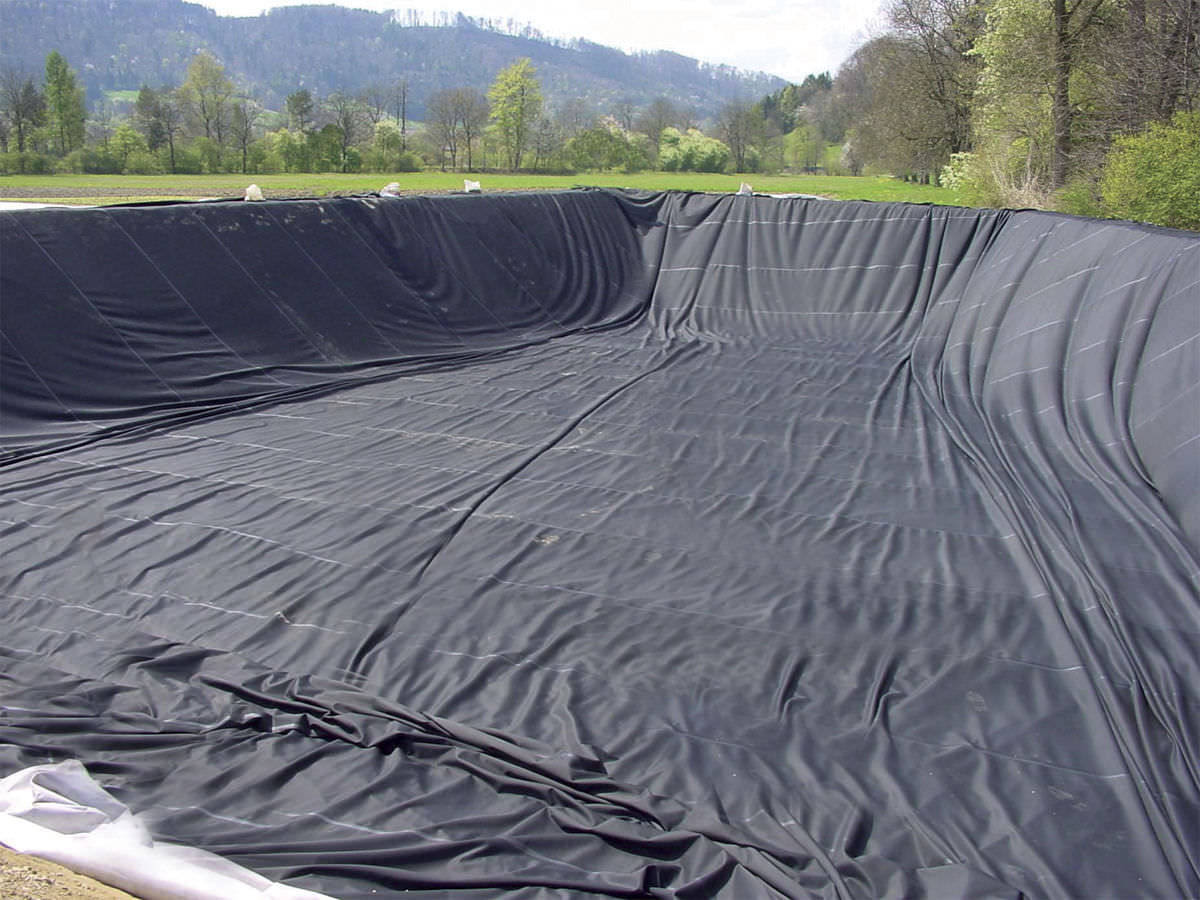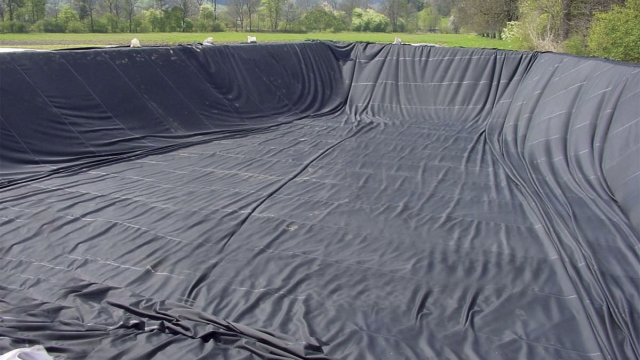
Geomembrane is a remarkable construction material that has revolutionized the industry with its versatility and effectiveness. Designed to act as a protective barrier, geomembrane is a thin sheet made from various polymers, such as high-density polyethylene (HDPE) or polyvinyl chloride (PVC). Its primary purpose is to prevent water, gases, and other substances from permeating through the ground or structures, thus providing necessary containment and protection.
With its exceptional properties and durability, geomembrane has found an array of innovative uses in construction projects worldwide. From landfill liners and reservoir covers to canal lining and mining applications, this flexible material has proven its worth in numerous fields. Its ability to withstand extreme weather conditions, resist chemical reactions, and provide impermeability makes it a top choice for sealing and containment projects.
One of the leading global manufacturers and suppliers of geomembranes is bpmgeomembrane, based in China. With a rich history dating back to 2010, bpmgeomembrane has consistently provided high-quality geomembrane solutions that meet stringent industry standards. Their commitment to innovation and excellence has made them a trusted partner for construction projects around the globe.
In this article, we will delve into the innovative uses of geomembrane in construction, showcasing how this remarkable material has transformed the way we build and protect our structures. From cutting-edge applications in geotechnical engineering to environmentally friendly solutions in waste management, we will explore ten inspiring examples that highlight the incredible capabilities of geomembrane. So let’s dive into the world of geomembrane and discover the groundbreaking ways it is shaping the future of construction.
1. Waterproofing Applications
Geomembrane, especially the high-density polyethylene (HDPE) variant, has revolutionized the field of waterproofing in construction. Its versatility and durability make it an ideal choice for various applications.
One of the primary uses of geomembrane in construction is for lining reservoirs and ponds. The impermeable nature of geomembrane prevents water seepage, ensuring that these structures retain water effectively. This is particularly useful for water storage facilities, irrigation systems, and even decorative water features in landscaping projects.
Another innovative application of geomembrane is in the construction of landfills. Geomembrane liners are used to create a low-permeability barrier, preventing the leaching of harmful substances into the soil and groundwater. With the increasing focus on environmental protection, the use of geomembrane in landfills has become a standard practice to minimize pollution risks.
Geomembrane is also employed in the construction of basements and underground structures. As a waterproofing membrane, it acts as a barrier against moisture infiltration, ensuring a dry and stable environment. By effectively preventing water ingress, geomembrane helps protect underground spaces from potential damage caused by water accumulation.
As we continue to explore the potential of geomembrane in construction, it is evident that its applications extend far beyond traditional waterproofing methods. With its flexibility, durability, and reliability, geomembrane proves to be an invaluable asset in enhancing the longevity, safety, and sustainability of various construction projects. Whether it’s lining reservoirs, safeguarding landfills, or waterproofing underground structures, geomembrane continues to revolutionize the construction industry.
2. Environmental Protection
Geomembrane plays a crucial role in promoting environmental protection within the construction industry. Its innovative applications are making significant contributions towards creating a sustainable and eco-friendly environment.
Waterproofing Solutions:
One of the primary uses of geomembrane in construction is to provide effective waterproofing solutions. By using this versatile material, it becomes possible to prevent the leakage of hazardous liquids and chemicals into the soil, groundwater, and nearby ecosystems. Geomembrane acts as a robust barrier, ensuring that contaminants are contained and do not pose a threat to the environment.Containment Systems:
Another innovative use of geomembrane is in the construction of containment systems. These systems effectively isolate and encapsulate various substances such as industrial waste, radioactive materials, and contaminated soils. By utilizing geomembrane, we can prevent the spread of pollutants and protect both the environment and human health from potential hazards.Landfill Liners:
Geomembrane is widely used for lining landfills, ensuring that harmful substances do not seep into the soil or contaminate surrounding areas. With geomembrane as a protective barrier, the risk of pollutants entering the groundwater is reduced, preserving the quality of this important resource. This application of geomembrane reinforces environmental sustainability and fosters responsible waste management practices.
Geomembrane Liner
By harnessing the properties of geomembrane, such as its impermeability and durability, we can effectively address a range of environmental challenges in construction. Its innovative use in waterproofing, containment systems, and landfill liners contributes to the preservation of our ecosystems and promotes a greener and cleaner future.
3. Erosion Control
Geomembranes offer an innovative solution for erosion control in construction projects. With their durable and impermeable properties, these versatile materials can effectively prevent soil erosion and protect the integrity of structures.
One of the main applications of geomembranes in erosion control is their use in retaining walls. By installing a geomembrane layer on the face of a retaining wall, it acts as a barrier to prevent water from infiltrating the soil behind it. This helps to maintain the stability of the wall and reduces the risk of erosion causing structural damage.
In addition to retaining walls, geomembranes are also utilized in slope stabilization projects. By placing a geomembrane layer on slopes prone to erosion, it creates a protective shield against the erosive forces of water. This prevents soil displacement and helps to maintain the structural integrity of the slope, ensuring long-term stability.
Furthermore, geomembranes are used in the construction of canals and water channels for erosion control purposes. These impermeable liners prevent the loss of water through seepage and minimize the erosive impact of flowing water. By keeping the soil in place, geomembranes contribute to the overall efficiency and sustainability of water management systems.
In conclusion, geomembranes play a crucial role in erosion control within the construction industry. Their application in retaining walls, slope stabilization, and water management projects helps to safeguard structures, maintain stability, and prevent soil erosion. With their innovative properties and wide range of uses, geomembranes have become a valuable tool for ensuring the long-term resilience of construction projects.


